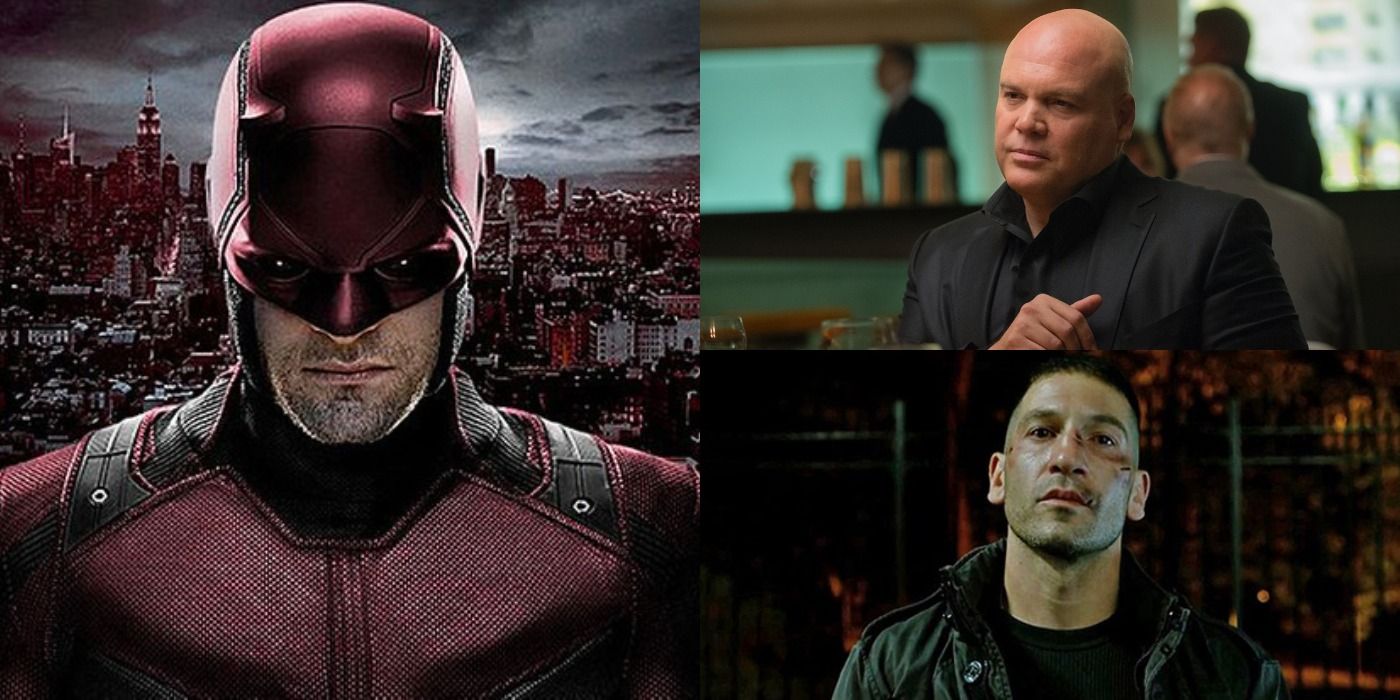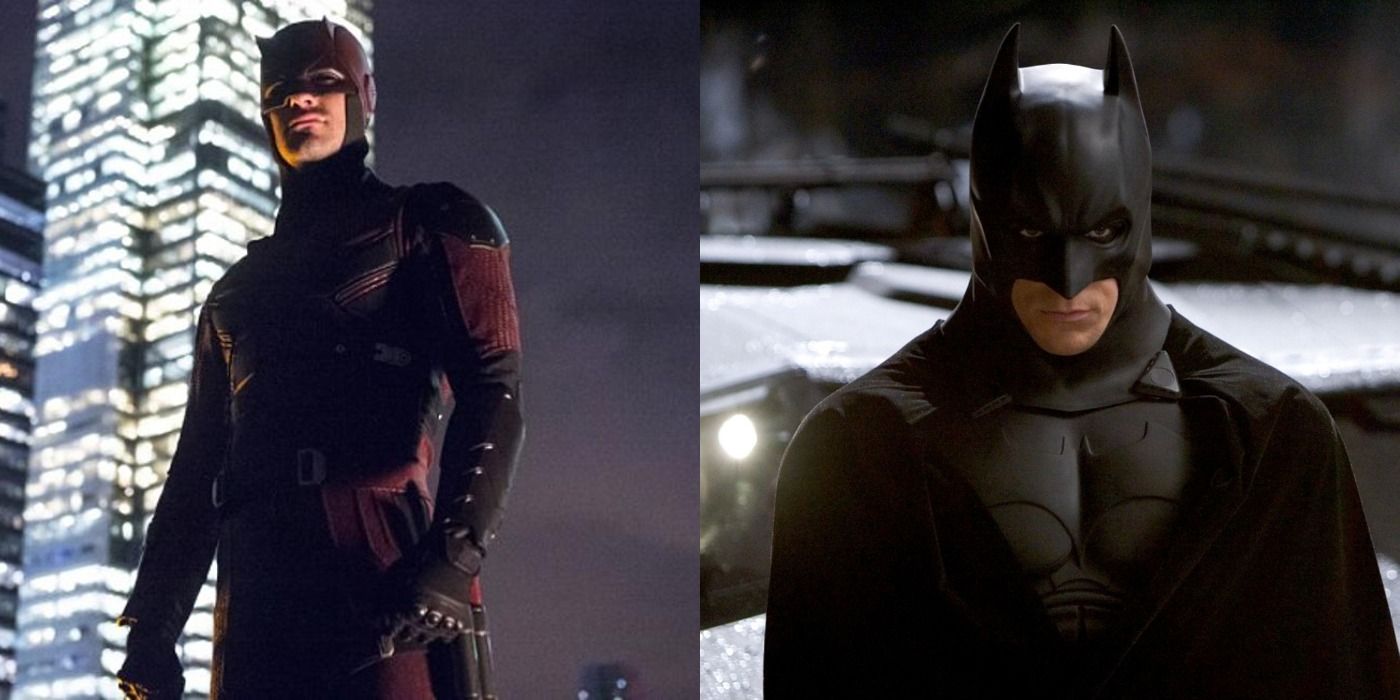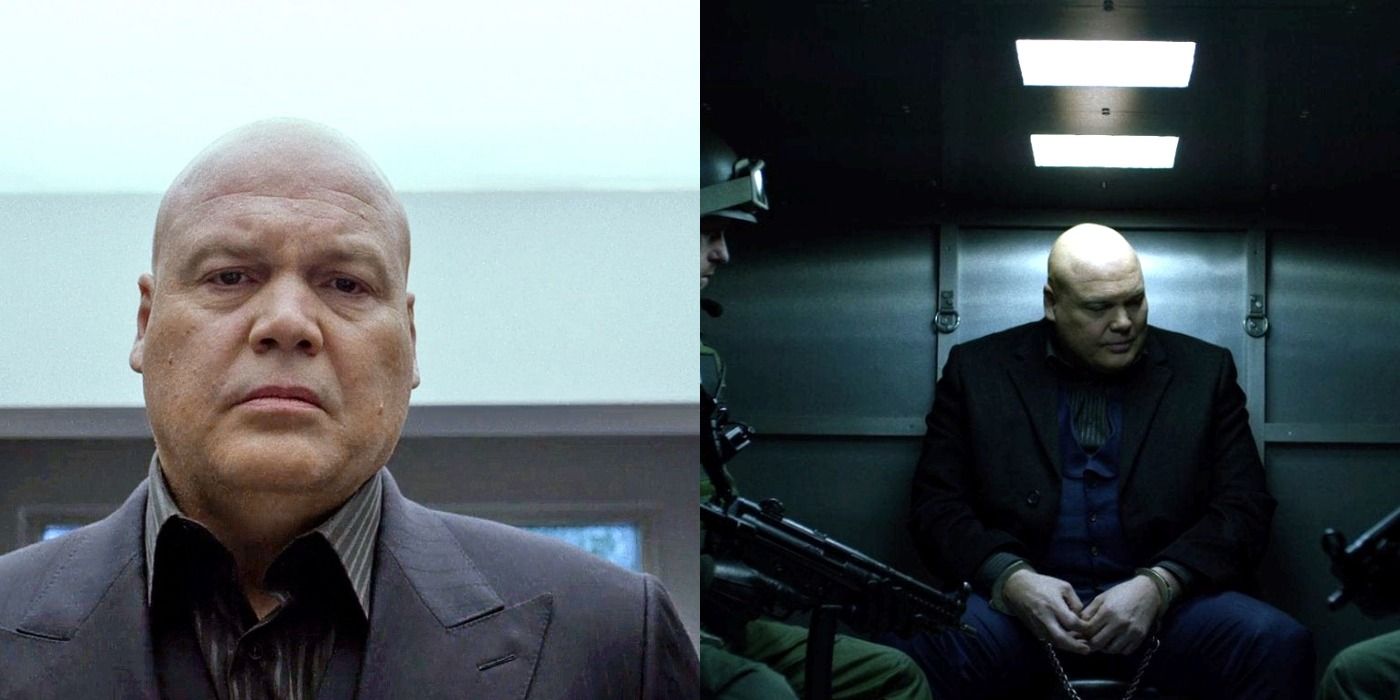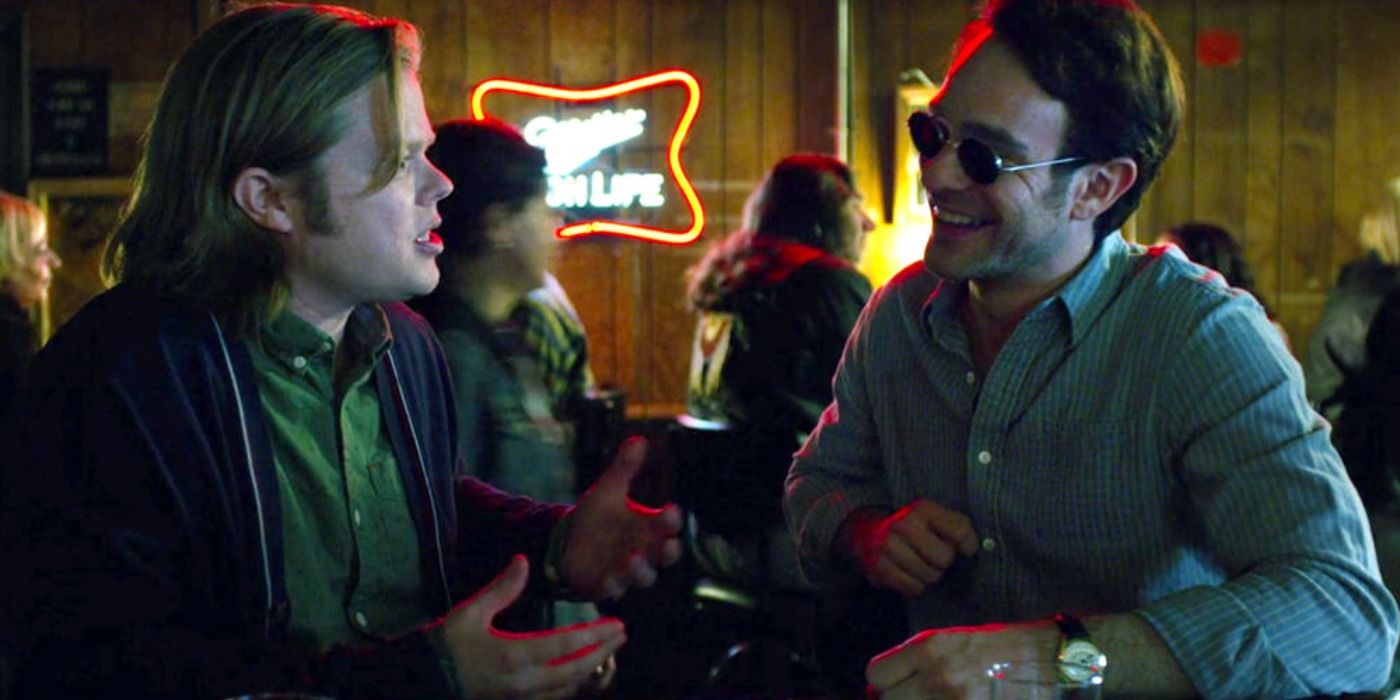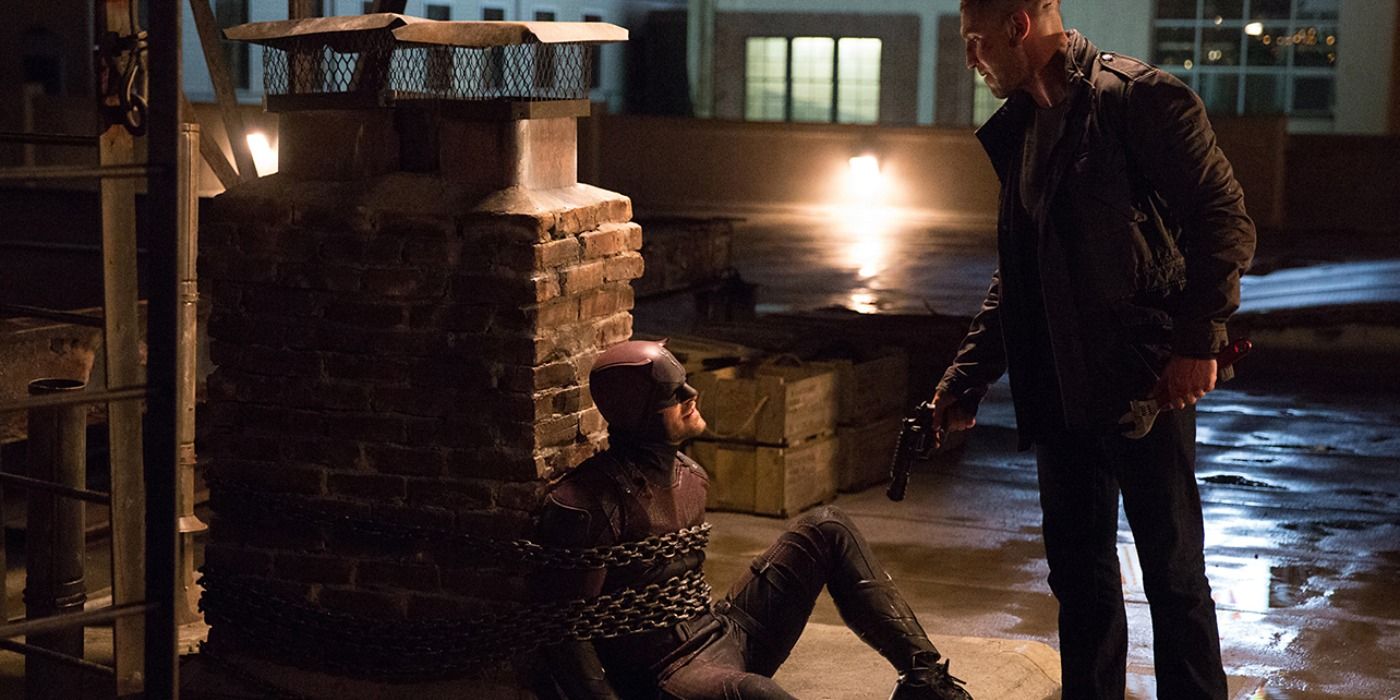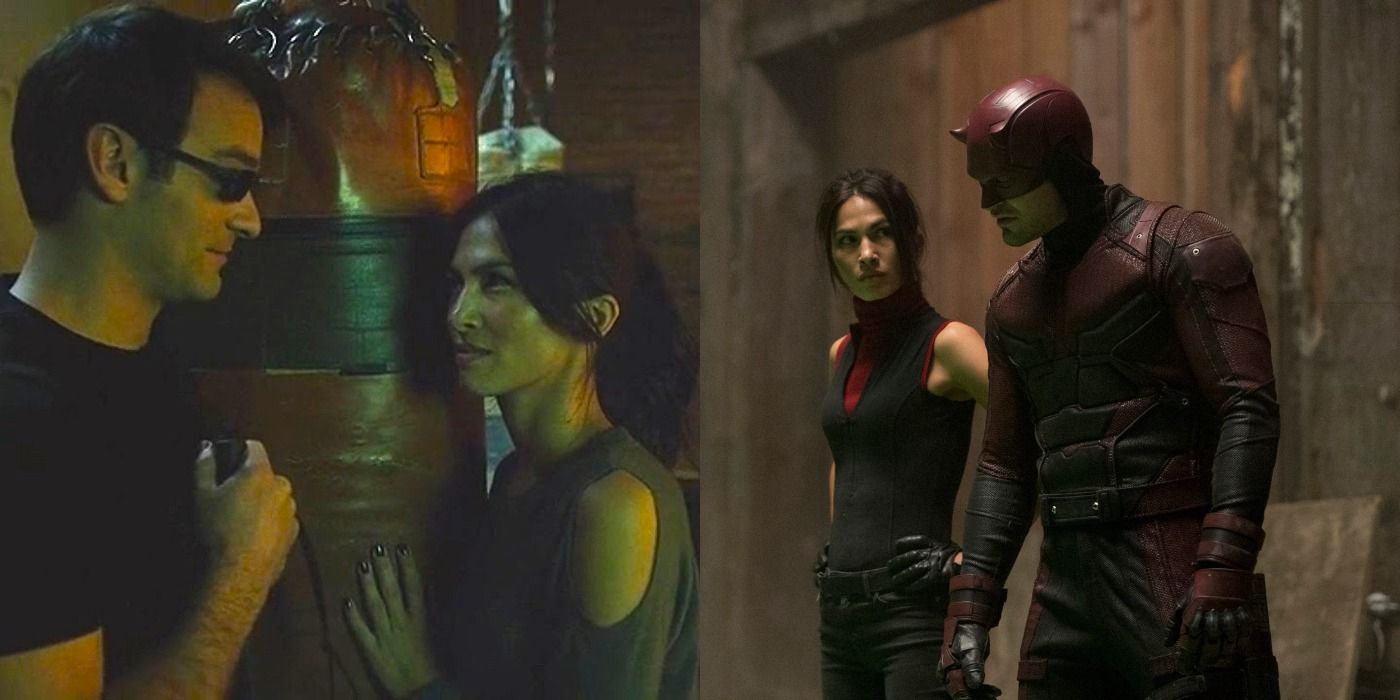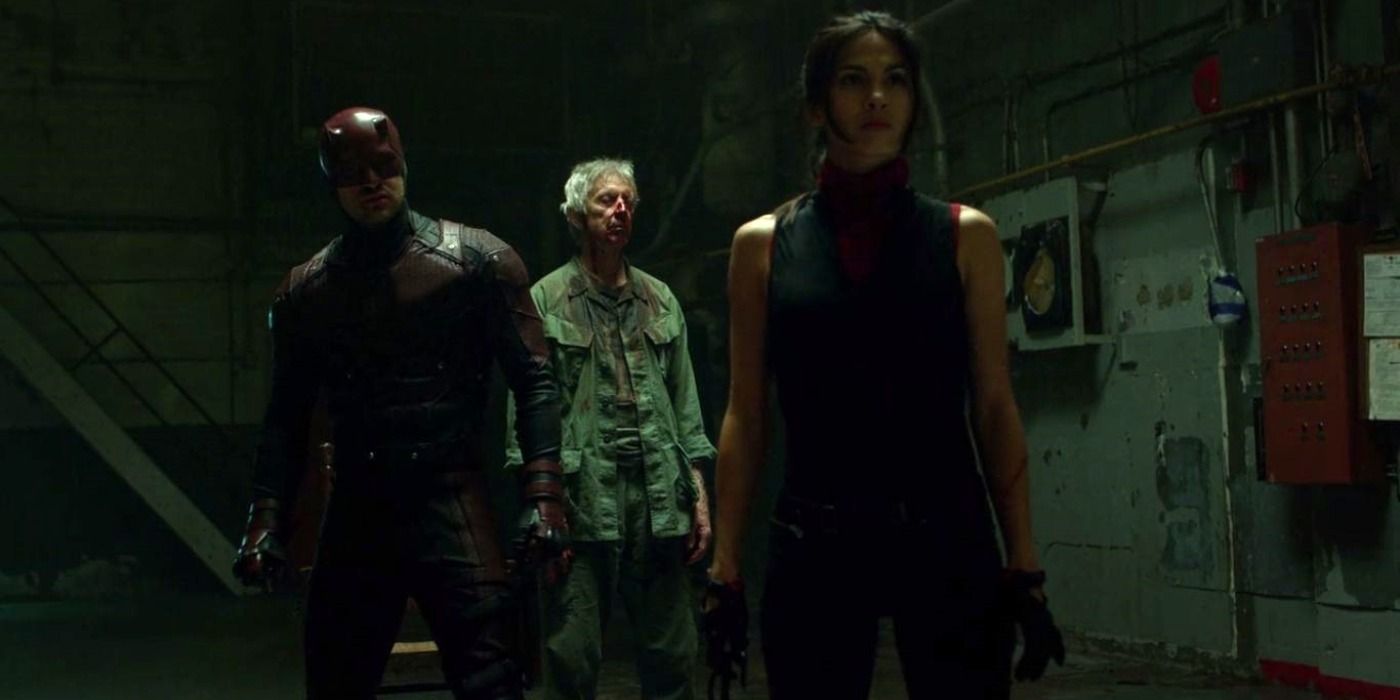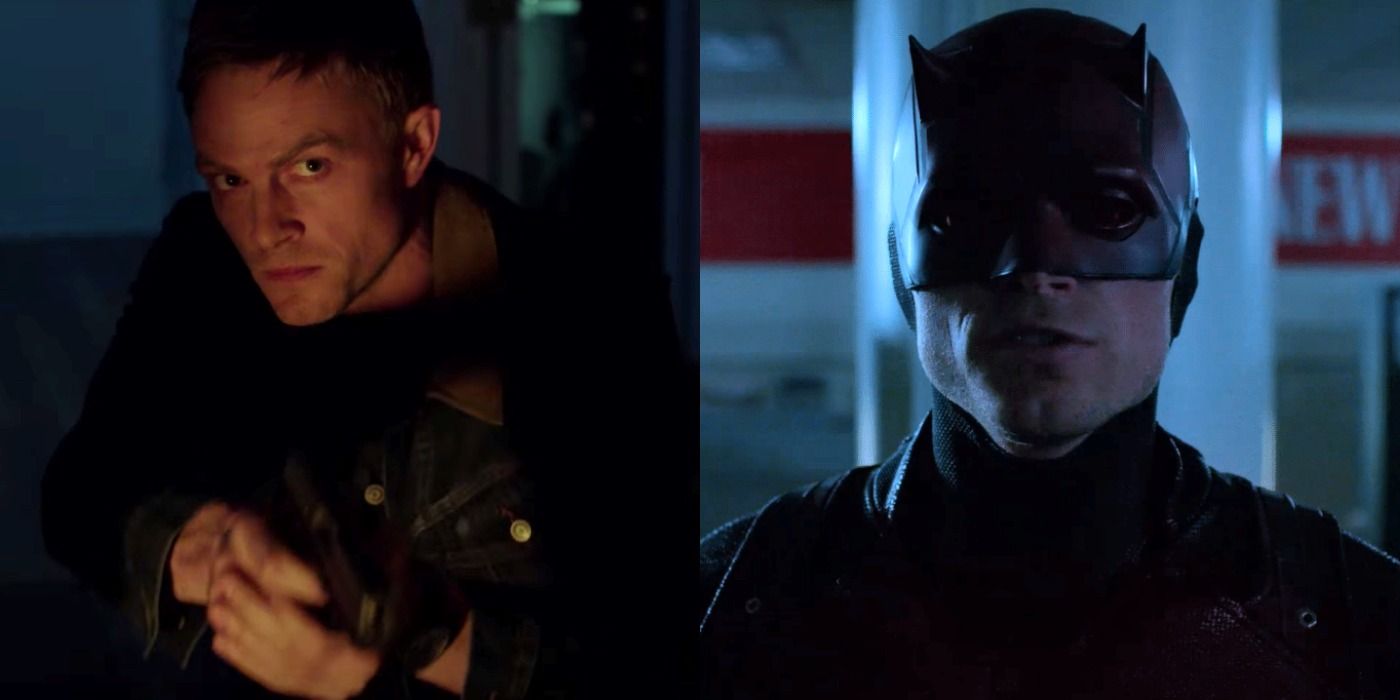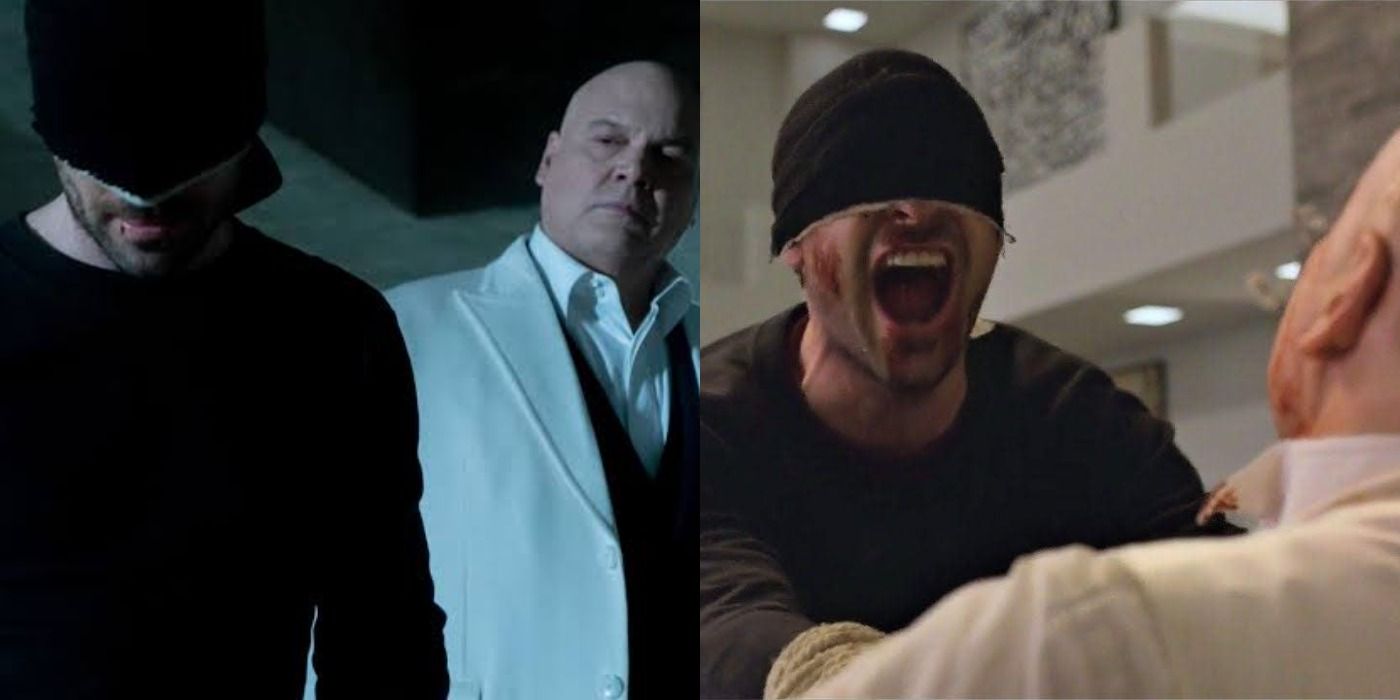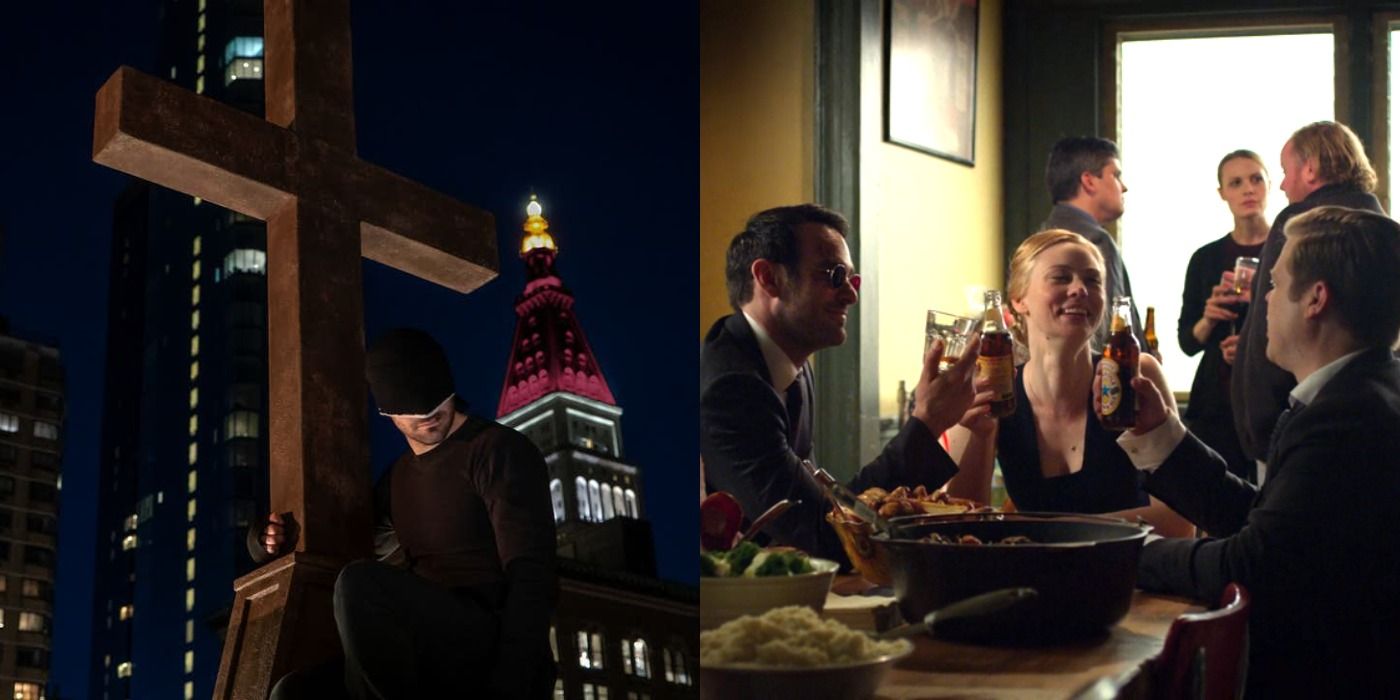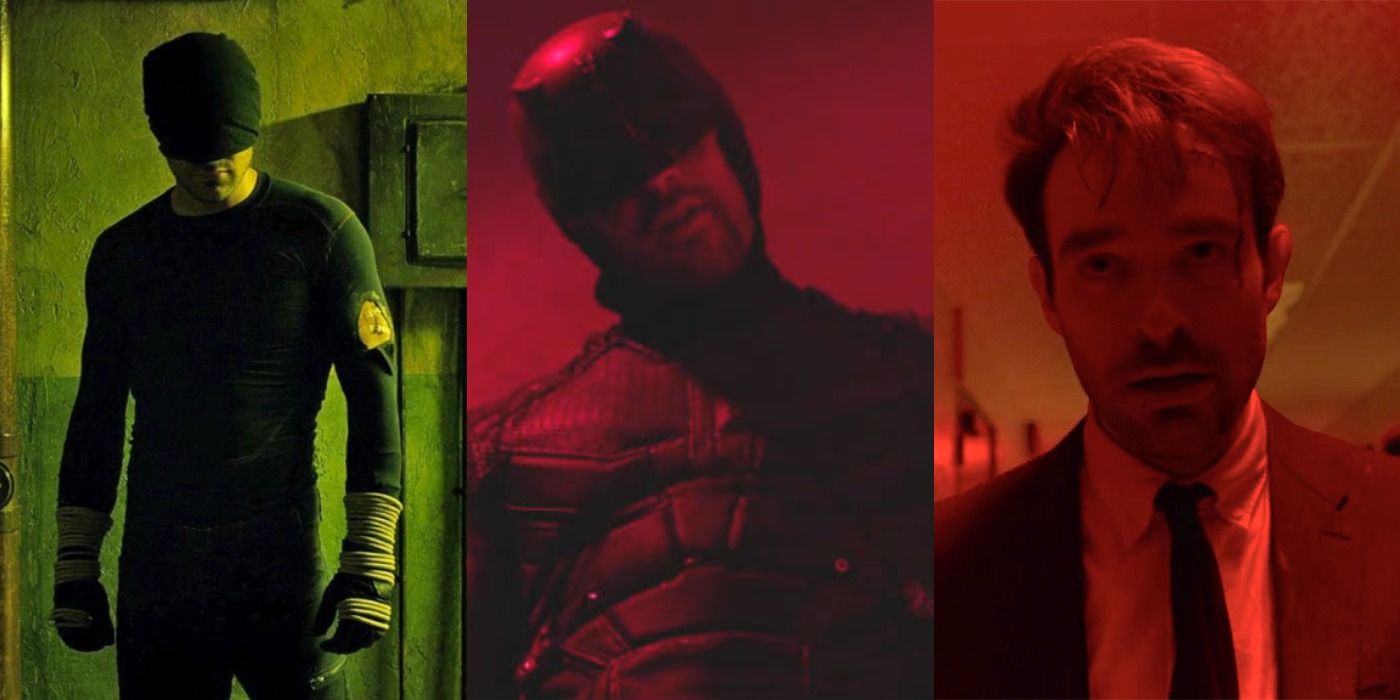Netflix's Daredevil TV series has given the Marvel superhero more deserved mainstream exposure, and though the show was unfortunately cut short by Disney+'s inevitable arrival, it provided three critically praised seasons.
The show takes cues from Frank Miller's crime-noir reinvention of the Man Without Fear in the comics that started in the early '80s, with tightly-scaled and intimate stories. This defines the entirety of seasons 1 and 3, along with the earlier portion of season 2. However, each season of Daredevil had great things to offer its fan base.
Season 1:
Daredevil's Batman Begins-Like Origin
The Dark Knight Trilogy and Daredevil season 1 both had the benefit of great opening stories. Batman Begins was arguably the DC hero's best origin, but its similarities to the Devil of Hell's Kitchen's beginnings extend beyond high quality.
Season 1 of the Netflix series structured itself narratively in a similar fashion by weaving Matt Murdock's past into the present-day plot. Even by 2015, comic book fans had grown tired of slogging through origin stories before getting to the meat of the tale. Therefore, this seamless integration of his origins as they became relevant in the present by way of flashbacks greatly helped the season's pacing and made it compelling throughout.
Kingpin's Parallel Origin Story
Season 1's narrative approach to origins was also applied well to Wilson Fisk's backstory. The Kingpin is one of Daredevil's greatest villains in the comics and the way the ominous puppet master was built up and fleshed out was enthralling to see. Like with Matt, Kingpin's grim beginnings were tastefully sprinkled in as the story's conflict became intertwined with Fisk himself.
One of the most notable episodes was when audiences saw his dark childhood and Fisk killing his father. Both Daredevil and Kingpin's confrontation finally collided by the end, but the latter's build-up brought his character arc to completion when he gave his haunting monologue. That moment cemented Kingpin's realization that not only was he the villain of his own story, but that he then aimed to embrace it.
Matt & Foggy's Friendship
While watching Daredevil and Kingpin's hateful rivalry unfold in exponentially aggressive ways was gripping throughout the show, Matt and Foggy Nelson's brotherly bond was a fantastic -- and necessary -- dose of wholesomeness. Their playful banter and compassion for each other is a core pillar of Matt's emotional wellbeing, so it was also one of the most important relationships the show needed to get right.
Every season passed that test with flying colors, putting to screen a back-and-forth that captures the essence of the duo's friendship in the comics. That's why their season 1 flashbacks to college and present-day rift upon Foggy discovering that Matt is Daredevil felt heartbreakingly genuine.
Season 2:
Daredevil & The Punisher's Dynamic
Though it's somewhat of a "black sheep" compared to seasons 1 and 3, season 2 was still a solid endeavor that introduced some key relationships for Daredevil. A particularly noteworthy dynamic was the tense interplay between the Devil of Hell's Kitchen and the Punisher. Like with Charlie Cox as the titular superhero and Vincent D'Onofrio's imposing Kingpin, Jon Bernthal's iteration of Frank Castle/Punisher has been celebrated by fans as definitive.
Both Cox and Bernthal played off each other's performances exceptionally well, with their rooftop debate on justice and redemption being one of the show's most unforgettable exchanges. Bernthal's erratic Punisher brought a heightened air of unpredictability and anxiety in the best possible way.
Daredevil & Elektra's Dynamic
An even more crucial relationship from the comics is Daredevil and Elektra's complicated romance. While her story arc was partly held back by The Hand plotline, Élodie Yung's portrayal of Elektra shined through and her chemistry with Cox's Daredevil was consistently engaging.
It's a shame the Defenders plotline prevented her from returning (and left her fate unclear after Daredevil's MCU revival), but the two conveyed so much emotion to effectively reflect their tumultuous relationship. The duo's moments of romance were convincing while their conflicts of morality were suitably heartbreaking, even though Elektra's death was a bit anticlimactic.
Furthering Daredevil & Elektra's Relationship With Stick
The first season gave a fascinating introduction to the strained relationship between Matt and his mentor Stick. It was an emotionally tense dynamic that gave a deeper insight into some of the inner turmoil Matt has been carrying since he was a kid. Season 2 explored that further but threw Elektra into the mix.
It's an exciting factor to give to an already ticking timebomb, as Stick had created ripple effects that damaged every combination of the trio's relationships with one another. Both Matt and Elektra dealt with abandonment issues by Stick, though, the former's loss was arguably colder. However, Elektra met Matt in college while on a covert mission for Stick, only for her to genuinely fall in love later on.
Season 3:
The Hauntingly Creative Portrayal Of Bullseye
One of the differences between MCU Daredevil and the comics is Bullseye's origins. Wilson Bethel's version of the supervillain took some tasteful inspiration from the comics while blending it with impressive original writing. The foreshadowing of Ben Poindexter's breaking point was haunting, especially in relation to the masterful way his origins were presented.
A black-and-white filter with Fisk "watching" Poindexter's chilling childhood play was one of the most inventive ways to execute a flashback. Bethel's performance perfectly sold the supervillain's dangerous unpredictability when the story was told from his perspective. Bullseye was an excellent supporting villain by being compelling in his own right while simultaneously complementing Kingpin. The focus and quality that was written into the duo were comparable to The Dark Knight's Joker and Two-Face.
Bringing Daredevil & Kingpin's Feud To A Boiling Point
Daredevil and Kingpin's hostile, vitriolic back-and-forth had been thoroughly engrossing throughout the show. Season 1 expertly put the pieces of what their relationship would be together, aptly raising the stakes of the ensuing conflict in a believable way. Season 3 served as the grand culmination of this rivalry, bringing it to a spectacle-worthy boiling point.
While there were preliminary plans to continue the show on Netflix, this dark incarnation of Daredevil and a frighteningly more cunning evolution of Kingpin clashing was a fitting finale. Involving Bullseye made for a thrillingly chaotic final bout, and Daredevil's eventual victory and "rebirth" all the more cathartic.
Satisfyingly Tied Up (Most) Loose Ends
Despite those unfortunately unrealized plans for future seasons, the writing for the third was concise and isolated enough to bring the series to a tidy conclusion. It helped that season 3 was mostly a "direct sequel" to season 1, as the second and The Defenders limited series stand alone compared to it.
After Matt fell out with his loved ones, the final season tied them back together throughout, leaving Kingpin's arc and emphatic defeat feeling deserved and neatly resolved. Likewise, Matt was reborn as the proper Daredevil he originally worked so hard to forge into Hell's Kitchen's symbol of hope and Guardian Devil. The only loose end left was Bullseye's ominous resurgence. Fans will be eager to see if Bethel's supervillain will return as well.
Seasons 1-3:
The Action Choreography
Without a doubt, the most consistent asset that Netflix's Daredevil has is its exceptional stunt choreography. The Man Without Fear is an expert-level martial artist, so it's a great relief that the cast and crew were able to drive home that aspect of the character while balancing the immersive crime-noir character drama.
The show took inspiration from classic cult-hit action movies like Oldboy and popularized it with its famous "hallway fight" scenes sprinkled throughout all three seasons. On top of the intricately choreographed martial arts, they were also brilliant showcases in cinematography. Season 3's prison breakout was arguably the most impressive in this regard, as it lasted a shocking 11 minutes with no cuts.

